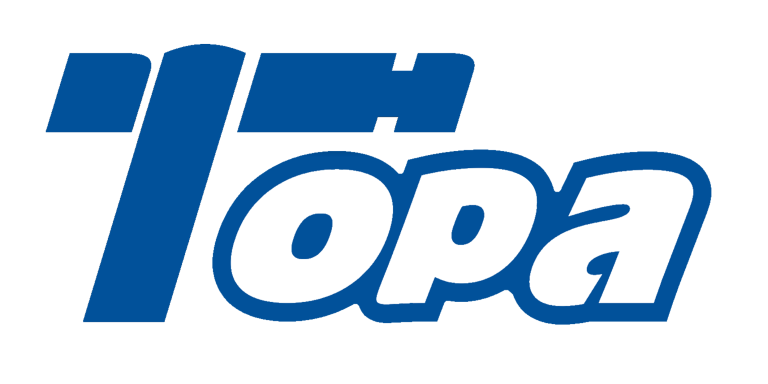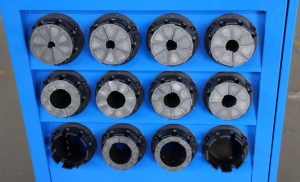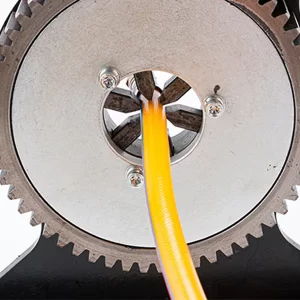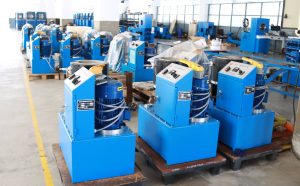Precision in hydraulic hose crimping is the backbone of a secure and efficient hydraulic system. Hydraulic hose crimping is the process of attaching hydraulic fittings to hoses using a crimper tool, ensuring a tight and leak-proof seal. The quality of the crimp determines the longevity and safety of the hydraulic system. In this article, we will explore why precision is crucial in hydraulic hose crimping and how it directly impacts system performance, safety, and durability.
1. What Role Does Precision Play in Hydraulic Hose Crimping?
Hydraulic hose crimping is a delicate process that requires high levels of precision. When crimping hydraulic hoses, the goal is to create a perfect seal that can withstand extreme pressure without leaking. But here’s the kicker—imprecision in crimping can lead to leaks, hose failures, and even catastrophic accidents in hydraulic systems.
Precision is crucial for ensuring that the fitting is securely attached to the hose, without over-compressing or under-compressing it. Over-compressing the fitting can damage the hose, while under-compressing it can create weak spots that may cause the hose to fail under pressure. Operators must achieve the perfect balance to ensure that the crimp holds securely and can withstand the pressures the hydraulic system will experience.
Additionally, the precision of crimping directly affects the overall performance of the hydraulic system. A well-crimped hose ensures optimal fluid flow, reduces the likelihood of hose failures, and enhances the safety of the system.
Table: Importance of Precision in Crimping
| Factor | Impact of Precision | Potential Issues of Imprecision |
|---|---|---|
| Crimping Force | Secure and leak-proof connection | Weak or insecure crimp, leading to leaks |
| Hose Material Integrity | Maintains hose durability and pressure resistance | Hose damage, premature failure |
| Hydraulic System Performance | Ensures consistent fluid flow and system pressure | Reduced efficiency, increased risk of failure |
2. Why Is Precision Crucial in the Crimping Process?
Precision is essential in hydraulic hose crimping because any deviations from the required crimping parameters can lead to significant system malfunctions. Ready for the good part? The wrong crimp can cause costly downtime, system failure, or even safety hazards.
The crimping process involves compressing the hose and fitting together under pressure, and it must be done within specific tolerances. When the crimping pressure is too low or too high, it compromises the connection, leading to leaks or hose rupture. Precision ensures that the crimped connection meets the exact specifications required for the hose to perform at its best under pressure.
Moreover, consistent crimping ensures that every hose fitting is identical, which is crucial for system-wide consistency. If one hose in the system is improperly crimped, it could affect the entire system’s operation, causing imbalances or failures that might otherwise be avoidable.
Table: Effects of Precision on Crimping Outcomes
| Crimping Precision | Result | Consequence of Low Precision |
|---|---|---|
| High Precision | Strong, secure, leak-proof connection | Increased risk of leaks and failures |
| Low Precision | Weak connection that may fail under pressure | System inefficiency, possible damage |
| Consistent Precision | Optimal performance and safety | Reliability and long-term durability |
3. How Does Precision Impact Hose Longevity and Durability?
Precision doesn’t just affect the immediate performance of a hydraulic system; it also impacts the long-term durability and lifespan of the hoses. Think about it: a hose that is improperly crimped may fail prematurely due to weakened connections. But here’s the kicker—replacing failed hoses costs time and money, and can even bring an entire system to a halt.
When the crimping pressure is applied evenly and accurately, it ensures that the hose is securely fastened to the fitting. This reduces the likelihood of hose slippage or leaks, which can cause fluid loss and system breakdowns. Consistent precision in crimping ensures that the hose can handle the stress of high-pressure systems without deteriorating prematurely.
Moreover, precise crimping prevents over-compression, which can cause the hose to break down due to excessive wear. By applying the correct crimping force, the operator can maintain the integrity of the hose material and prevent damage that could lead to premature failure.
Table: Impact of Precision on Hose Durability
| Precision Level | Impact on Hose Durability | Potential Long-Term Issues |
|---|---|---|
| High Precision | Maintains hose integrity and resistance | Extended service life, fewer failures |
| Low Precision | Weakened connection, early hose damage | Premature hose failure, system downtime |
| Consistent Precision | Reduces wear and tear on hose material | Improved reliability and efficiency |
4. What Are the Key Factors That Influence Precision in Crimping?
Several factors contribute to achieving precise crimping. But here’s the catch—each of these factors must be carefully controlled to ensure that every crimp is consistent and meets the required standards.
First, the crimping force must be accurately set to match the hose and fitting specifications. Too much force can damage the hose, while too little force may result in a loose connection that fails under pressure. The operator must adjust the crimper to the appropriate pressure settings, which is determined by the size and material of the hose and fitting.
Second, the alignment of the crimping dies is crucial. If the dies are misaligned, the crimp will not be uniform, leading to weak spots in the connection. Crimping dies must be inspected regularly to ensure that they are clean, properly aligned, and not worn down.
Finally, the operator’s experience plays a significant role in precision. Experienced operators know how to set up the crimper, load the hose, and adjust the pressure accurately, ensuring that the crimping process is done correctly every time.
Table: Key Factors Influencing Crimping Precision
| Factor | Impact on Precision | How to Improve Precision |
|---|---|---|
| Crimping Force | Ensures correct compression of hose and fitting | Adjust pressure settings based on hose type |
| Die Alignment | Ensures uniform crimping across the entire fitting | Regular inspection and adjustment of dies |
| Operator Experience | Knowledge of tool operation and pressure control | Training and hands-on experience |
5. How Do Different Hose and Fitting Types Affect Crimping Precision?
Not all hoses and fittings are created equal. Precision in crimping can vary significantly depending on the type of hose and fitting being used. What’s the real story? Different materials and sizes require different crimping pressures and methods to ensure a secure connection.
For example, a high-pressure hose requires more crimping force than a standard hose, as it needs to withstand greater pressure. The type of fitting also impacts crimping precision. Some fittings, like those with larger diameters or complex designs, require more precision to ensure that they fit tightly and securely onto the hose.
Furthermore, some hose materials, such as rubber, may compress more easily than others, like steel-reinforced hoses. Crimping pressure must be adjusted accordingly to avoid damaging the material while still achieving a tight fit.
Table: How Hose and Fitting Types Affect Crimping
| Hose Type | Fitting Type | Impact on Crimping Precision |
|---|---|---|
| High-Pressure Hose | Metal Fittings | Requires higher crimping force to ensure tight seal |
| Rubber Hose | Barb Fittings | Needs moderate pressure for secure fitting attachment |
| Steel-Reinforced Hose | Push-On Fittings | Requires precise alignment and moderate pressure |
6. What Equipment and Tools Are Needed for Precise Crimping?
To achieve precise hydraulic hose crimping, you need the right tools and equipment. Without the correct crimping tools, even the most skilled operator can struggle to achieve high-precision results. But here’s the kicker—having the right tools not only improves precision but also reduces maintenance time and improves safety.
The most important tool is the hydraulic crimper itself. The crimper should be designed to provide consistent pressure across the entire crimping process. Additionally, crimping dies must be chosen based on the size and type of hose being crimped. Dies should be inspected regularly to ensure that they are in good condition and aligned properly.
Other important tools include calibration devices, which ensure that the crimper is applying the correct pressure. These devices allow operators to monitor and adjust the crimping force as needed, ensuring that the crimping process is always within the required specifications.
Table: Essential Tools for Hydraulic Hose Crimping
| Tool | Purpose | Importance |
|---|---|---|
| Hydraulic Crimper | Applies crimping pressure to hose and fitting | Ensures secure, leak-proof connection |
| Crimping Dies | Used to compress the fitting onto the hose | Must be selected based on hose type and size |
| Calibration Devices | Monitors and adjusts crimping pressure | Ensures correct pressure is applied |
7. How Do Hydraulic Hose Crimper Manufacturers Ensure Precision?
Manufacturers of hydraulic hose crimpers prioritize precision in the design and production of their tools. Ready for the good part? These companies employ rigorous quality control measures to ensure that each crimper performs with the highest accuracy.
Most hydraulic crimpers are designed with automated systems that adjust pressure and cycle times based on the hose and fitting specifications. These automated adjustments reduce the chance of human error and ensure that every crimp is as precise as the last one.
Additionally, many crimper manufacturers provide calibration tools and detailed manuals to help operators maintain the crimpers’ accuracy over time. These features help operators achieve consistent, high-quality crimps, regardless of the job size or complexity.
Table: Crimper Features Ensuring Precision
| Feature | Function | Benefit |
|---|---|---|
| Automated Pressure Adjustments | Automatically adjusts crimping pressure | Ensures consistent crimping across different jobs |
| Calibration Tools | Devices to ensure crimpers are set correctly | Allows for regular checks and adjustments to maintain precision |
| Detailed Operator Manuals | Provides step-by-step instructions | Ensures correct use and troubleshooting for precision |
8. What Are the Challenges in Achieving Precision During Crimping?
Achieving precision in hydraulic hose crimping isn’t always straightforward. Several challenges can arise during the crimping process that may compromise precision. Common problems include die misalignment, incorrect crimping pressure, and operator error.
Die misalignment is one of the most common challenges, as even slight misalignments can lead to uneven crimps. If the crimp is uneven, it can result in leaks or hose failures. Proper training and regular checks are required to prevent this issue.
Another challenge is applying the correct crimping pressure. Different hose materials and fittings require different amounts of pressure. If the pressure is too high or too low, the crimp may not hold securely, leading to performance issues or safety risks.
Finally, operator error can affect the precision of the crimping process. Operators must be well-trained to avoid mistakes such as incorrect die selection or improper pressure settings.
Table: Challenges and Solutions in Crimping Precision
| Challenge | Cause | Solution |
|---|---|---|
| Die Misalignment | Worn dies, incorrect setup | Regular checks and proper die alignment |
| Incorrect Crimping Pressure | Inaccurate pressure settings | Calibration tools and operator training |
| Operator Error | Lack of experience or poor technique | Ongoing training and practice |
9. How Do Operators Ensure Consistent Precision in Crimping?
For operators to achieve consistent precision, they must follow strict guidelines and procedures. But here’s the kicker—routine maintenance, proper calibration, and ongoing training are just as important as the initial setup.
Operators must be familiar with the crimper’s controls and how to adjust the settings based on the hose and fitting specifications. They must also be vigilant in performing routine inspections and maintaining the crimper to ensure that it is always operating at peak performance.
Additionally, regular training and practice are essential for maintaining consistent precision. Experienced operators are better at recognizing when a crimp is not perfect and making quick adjustments.
Table: Steps for Ensuring Consistent Crimping Precision
| Step | Action | Purpose |
|---|---|---|
| Routine Inspections | Inspect dies, fittings, and hoses for damage | Ensure equipment is in good condition |
| Calibration | Regularly calibrate the crimper for accuracy | Ensure consistent pressure settings |
| Training and Practice | Ongoing training for operators | Maintain skills and recognize errors quickly |
10. How Do You Troubleshoot Precision Problems in Hydraulic Hose Crimping?
Troubleshooting precision problems is an essential skill for hydraulic hose crimper operators. Common issues include uneven crimps, incorrect pressure, and misaligned dies. Fortunately, these problems are often easy to fix once the cause is identified.
For uneven crimps, operators should check for misaligned dies or incorrect pressure settings. Sometimes, a simple adjustment of the pressure or re-aligning the dies is all that is needed to fix the issue.
When the crimper isn’t applying enough pressure, it could be due to worn seals or a faulty pressure regulator. In this case, operators must inspect the equipment for damage and replace any worn parts to restore full functionality.
Table: Troubleshooting Common Precision Problems
| Issue | Cause | Solution |
|---|---|---|
| Uneven Crimps | Misaligned dies or incorrect pressure | Realign dies and adjust pressure settings |
| Low Pressure | Worn seals, faulty pressure regulator | Inspect and replace seals or regulators |
| Misaligned Dies | Worn or incorrectly installed dies | Adjust or replace the dies |
Conclusion
Precision is the key to successful hydraulic hose crimping. It ensures that every connection is secure, leak-proof, and able to withstand the pressures of the hydraulic system. From choosing the right crimper to properly maintaining equipment and applying the correct crimping force, every step must be executed with care. By following best practices, troubleshooting effectively, and investing in proper training, operators can consistently achieve high precision, ensuring the longevity and safety of their hydraulic systems.
FAQ Section
Q1: What is hydraulic hose crimping?
Hydraulic hose crimping is the process of attaching hydraulic fittings to hoses by compressing the fitting onto the hose using a crimping tool, creating a secure and leak-proof connection.
Q2: How does hydraulic hose crimping work?
A hydraulic hose crimper applies pressure to compress the fitting onto the hose, ensuring a tight seal. This process is crucial for creating secure connections in hydraulic systems that can handle high pressure.
Q3: Why is precision important in hydraulic hose crimping?
Precision ensures that the crimp is secure and leak-proof, preventing hose failures, leaks, and safety hazards that can arise from improper crimping.
Q4: What factors influence the precision of hydraulic hose crimping?
Key factors include crimping force, die alignment, operator experience, and the regular maintenance and calibration of the crimping tool.
Q5: How do you troubleshoot precision problems in hydraulic hose crimping?
Troubleshooting involves inspecting for misaligned dies, incorrect pressure settings, or worn-out components. Once the issue is identified, adjusting the dies or recalibrating the crimper can resolve the problem.




